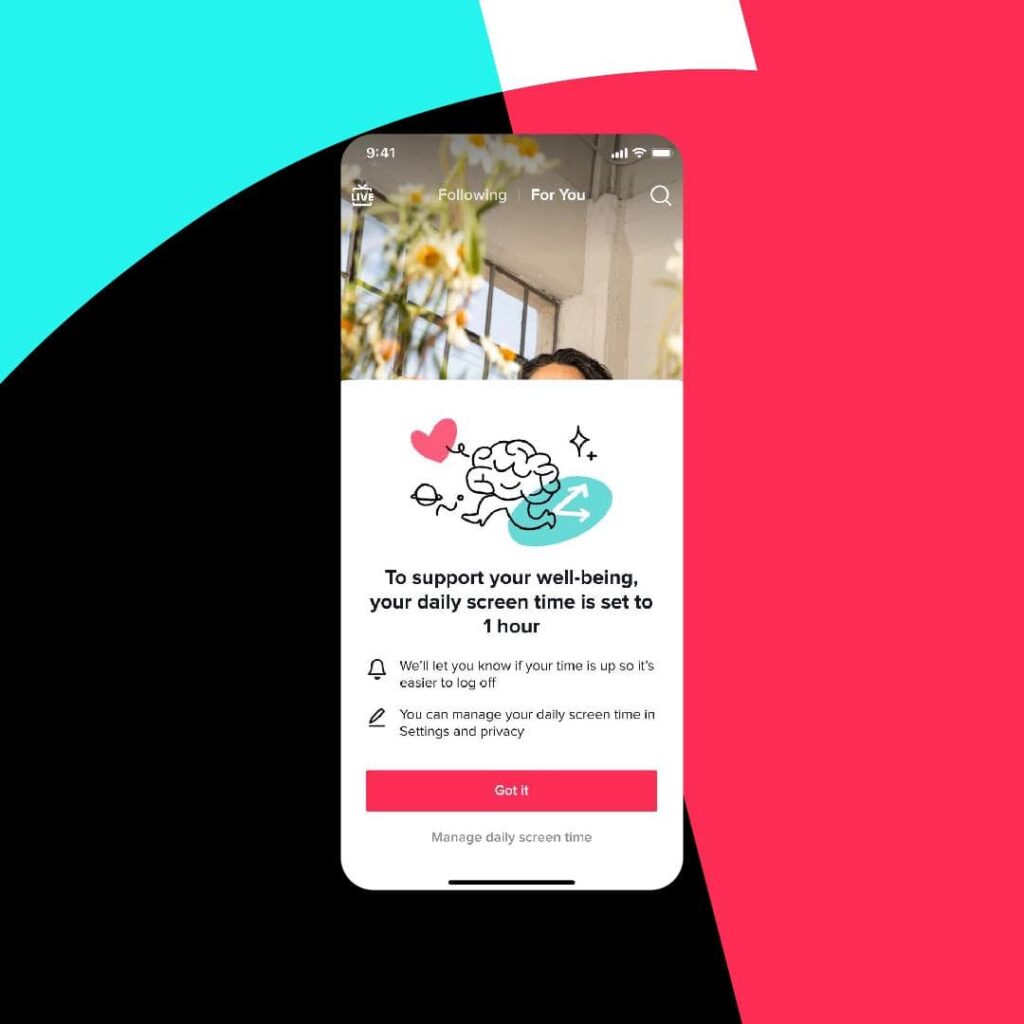TikTok announced a series of features designed to protect the well-being of underage users on the platform, including the block after an hour of use. Although it seems that getting around this limit is not only possible – but also pretty easy.
TikTok and the block after one hour for minors: how it works and how to get around it
In the coming weeks, all TikTok users under the age of 18 will have a 60 minute daily usage time limityou. What does this mean for teenage users using the app? Once this limit is reached, they will need to enter a passcode to continue watching videos on the platform. The code will be communicated by TikTok being set up.
Parents and children have the option to decide to disable the feature completely. But in any case, if they should spend more than 100 minutes a day on the app, they will be prompted to set a new limit.
Why the new daily usage limit on TikTok?

TikTok says these tips, in its month-long tests, have boosted usage of its own screen time management tools by 234%. Additionally, kids will receive an inbox notification every week summarizing their time on the app. This way they can be aware of how much time they spend on TikTok. The goal therefore remains that of making children make informed choices, helped by their parents or guardians with these new tools.
Timing is selected by the Digital Wellness Lab at Boston Children’s Hospital. Cormac KeenanHead of Trust and Safety at TikTok, explains: “Although there is no collectively approved position about how much screen time is ‘too much’, or even the impact of screen time more broadly, we recognize that teenagers typically require extra support as they begin to explore the online world independently.”
This feature also applies to children under 13 using the app for the youngest ones, already limited. In this case, a parent or guardian code can increase the time ahead of the 30 minute screen. Even older teens can link their account with Family Link to share this new TikTok time tracking feature with parents and guardians.
How to get around the limit

Underage TikTok block has thus more of a health tip value than a control one. Users over 13 can already know the code directly to unlock the account and continue to use it, while users under 13 need that of their parents or guardians.
Added to this are other light and easy to circumvent impositions (which in the jargon are called “nudge”, i.e. push), such as the blocking of push notifications for children under 13 after 9 pm and for other teenagers after 10 pm. Instead having to set them minor users will have these limits immediately.
Many critics, however, point out that this “push” to self-regulate goes in direct opposition to what the TikTok algorithm invites you to do. Imran AhmedCEO of the Center to Stop Digital Hate, told the BBC that TikTok’s “is the crack cocaine of algorithms. It is the algorithm that causes the most addiction, the most danger and the one we have to deal with the fastest”.
The one proposed by TikTok therefore seems to be a rather limited measure and difficult to implement. While studies done by the app demonstrate the success of this underage blocker, we’ll have to wait for independent studies to really understand if it can reduce your use of TikTok.
Will the effort of having to enter a code after an hour of use be enough to help teenagers self-regulate? The doubts remain. The so-called “nudge theory”, which instead of imposing bans (in this case the total blocking of the app) gives pushes that make an attitude considered harmful (enter the code to continue after an hour of TikTok) more inconvenient, have repeatedly demonstrated to function. But usually, the opposite push it is not an algorithm designed to keep you glued to the screen for an indefinite time.
The fact is that if you are still a minor TikTok user, in the coming weeks you will have to suffer the app block after sixty minutes a day. If this really will makes you want to stop watching videos and invites you to study, read, make music or any other hobby of yours, let us know in the comments below.















Leave a Reply
View Comments